Key takeaways
- Coding bootcamps focus on practical skills and problem-solving, fostering confidence in students with little to no prior programming experience.
- Effective planning involves setting clear goals, understanding participant backgrounds, and balancing theory with hands-on practice.
- Engagement is enhanced through interactive challenges, community building, and celebrating small victories, which helps maintain student motivation.
- Success is measured not just by course completion but by students’ ability to apply skills independently and their ongoing development after the bootcamp.
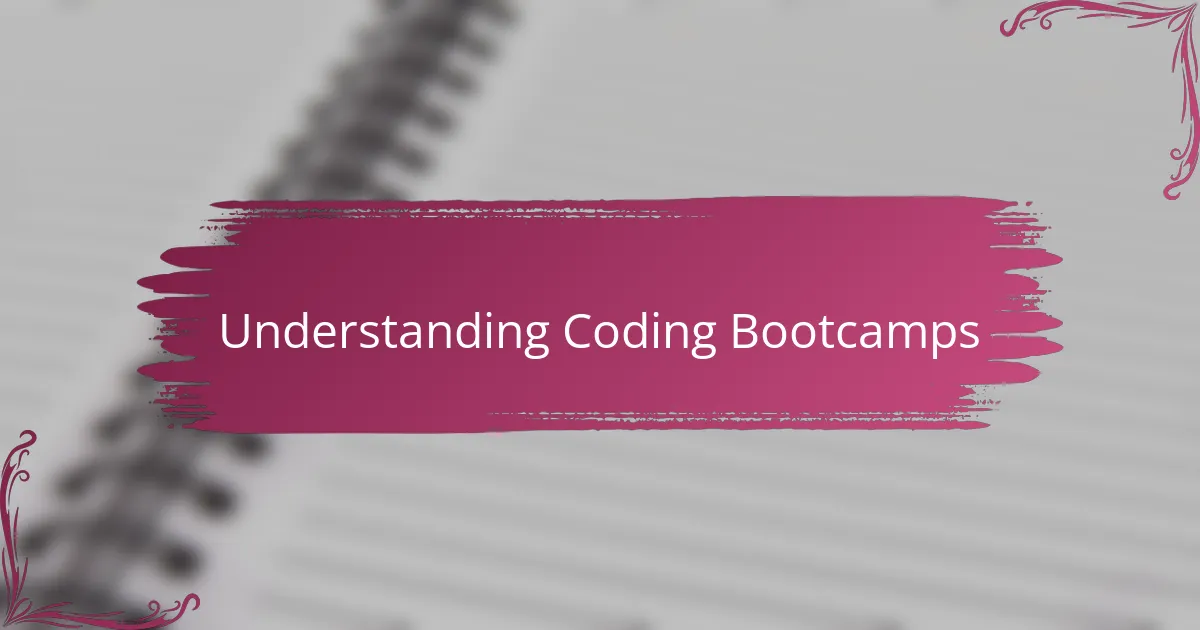
Understanding Coding Bootcamps
Coding bootcamps have become a powerful way for people to dive into programming without the traditional years of study. When I first explored this path, what struck me was their intense focus on practical skills, which felt incredibly motivating. Have you ever wondered how learning to code could be so immersive and efficient?
What I found most fascinating about coding bootcamps is their ability to break down complex concepts into manageable, hands-on experiences. This approach helped me, and many others, to build confidence quickly, even if we started with little or no background in programming. It’s like being thrown into the deep end, but with a life jacket always at hand.
In my experience, understanding coding bootcamps means appreciating their dual purpose: they teach not only coding languages but also problem-solving and collaboration skills essential for real-world projects. Reflecting on this, I realized that the bootcamp’s structure isn’t just about coding—it’s about transforming how you think and work as a developer.
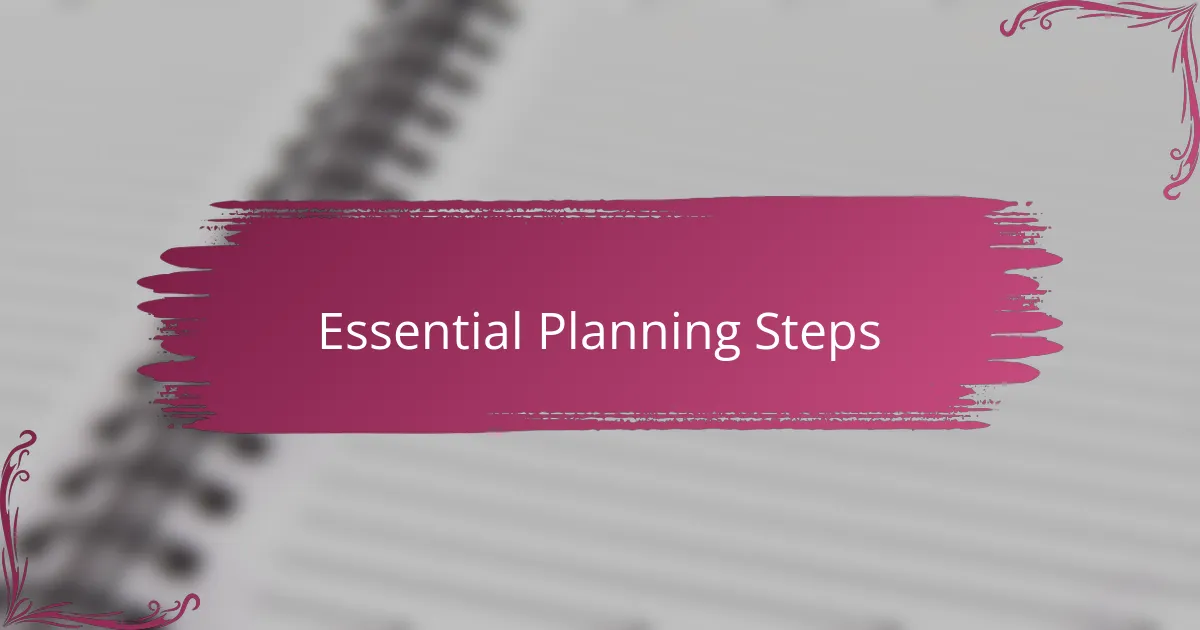
Essential Planning Steps
Planning a coding bootcamp starts with pinpointing clear goals. I remember wondering, “What do I want participants to achieve by the end?” Focusing on specific skills and outcomes helped me shape a curriculum that felt purposeful and achievable.
Next, I had to consider the logistics—how long should the bootcamp run, what tools would participants need, and how to balance theory with hands-on practice. It wasn’t easy juggling all these elements, but mapping out these details early saved a lot of confusion later.
Finally, I asked myself, “Who am I designing this for?” Understanding the background and learning pace of potential students allowed me to tailor the content so it was challenging but never overwhelming. That awareness made all the difference in creating an engaging experience.

Choosing Curriculum and Tools
Selecting the right curriculum felt like choosing a map for uncharted territory. I asked myself, “Which programming languages and frameworks would truly equip learners for today’s job market?” Balancing foundational topics with trendy tools was tricky, but focusing on practical skills made the decision clearer.
When it came to tools, I leaned on platforms that combined simplicity with power—IDE choices, version control systems, and collaborative software that wouldn’t overwhelm beginners. Have you ever struggled with complicated setups that distract more than help? I wanted to avoid exactly that, so I picked tools that encouraged experimentation, not frustration.
One moment stands out: testing the curriculum with a small group and realizing that a hands-on project using real-world tools sparked far more excitement than endless lectures. That confirmed for me that the blend of curriculum and tools isn’t just about what’s taught—it’s about how engaging and accessible learning becomes.
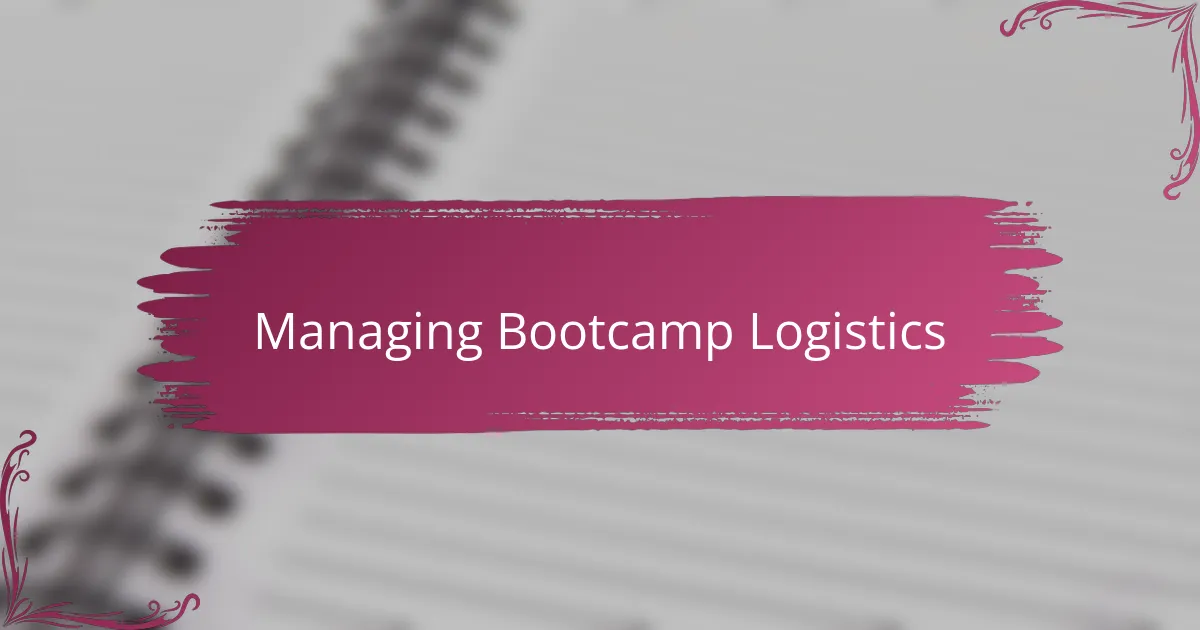
Managing Bootcamp Logistics
Managing the logistics of a coding bootcamp was one of the trickiest parts for me. I had to coordinate schedules that suited both instructors and participants, which meant juggling different time zones and work commitments. Have you ever tried fitting a dozen busy people into one consistent routine? It’s like herding cats—but with a clear plan, it became manageable.
Booking the right venue was another challenge. I remember searching for spaces that had reliable internet and enough room for group activities, but also felt welcoming and inspiring. The atmosphere mattered a lot—after all, the environment can influence how comfortable and motivated people feel while learning.
Then came the nitty-gritty tasks: organizing meals, preparing materials, and setting up tech support for troubleshooting. It might seem small, but ensuring these details were handled took a load off everyone’s minds and let us focus on what really mattered—coding. I learned that smooth logistics don’t just support the bootcamp; they shape the entire learning experience.
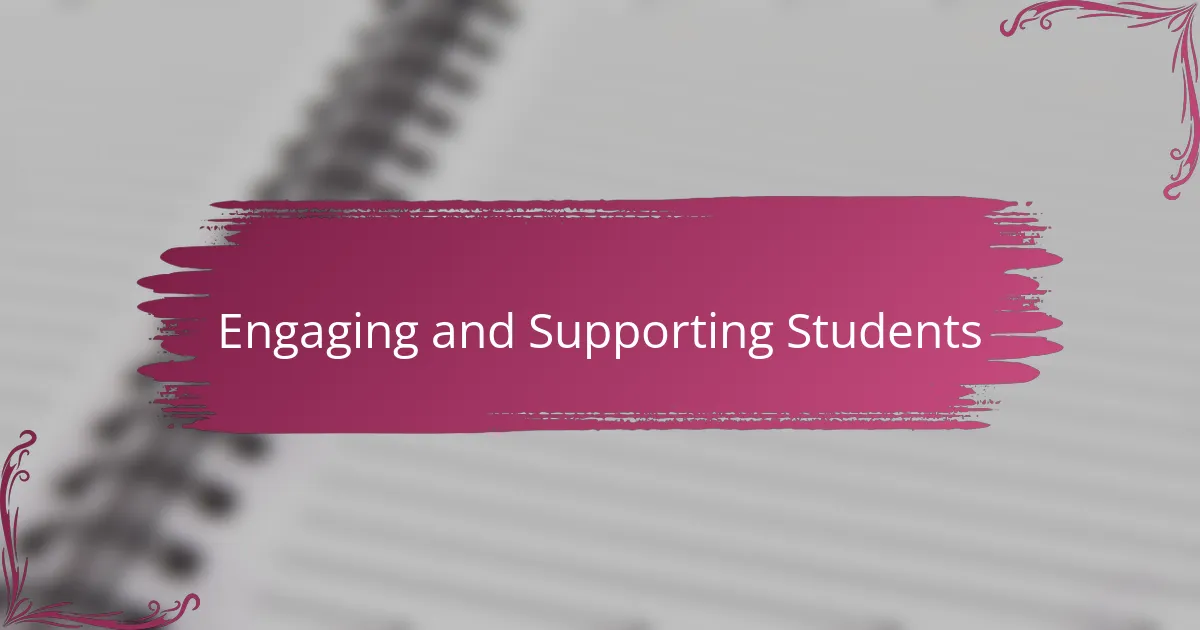
Engaging and Supporting Students
Keeping students engaged throughout the bootcamp was a top priority for me. I discovered that mixing interactive coding challenges with real-time feedback kept the momentum going. Have you ever noticed how quickly enthusiasm fades when lessons become too passive? That insight pushed me to foster active participation every chance I got.
Supporting students went beyond just answering questions—I made it a point to celebrate small victories, whether it was mastering a tricky function or debugging a stubborn error. I saw how those little moments of encouragement built confidence and made the learning journey feel more personal and less overwhelming.
Creating a sense of community also made a huge difference. I encouraged collaboration through pair programming and group projects, which helped students feel less isolated and more motivated. From my experience, when learners connect over shared challenges, their engagement and dedication naturally deepen.
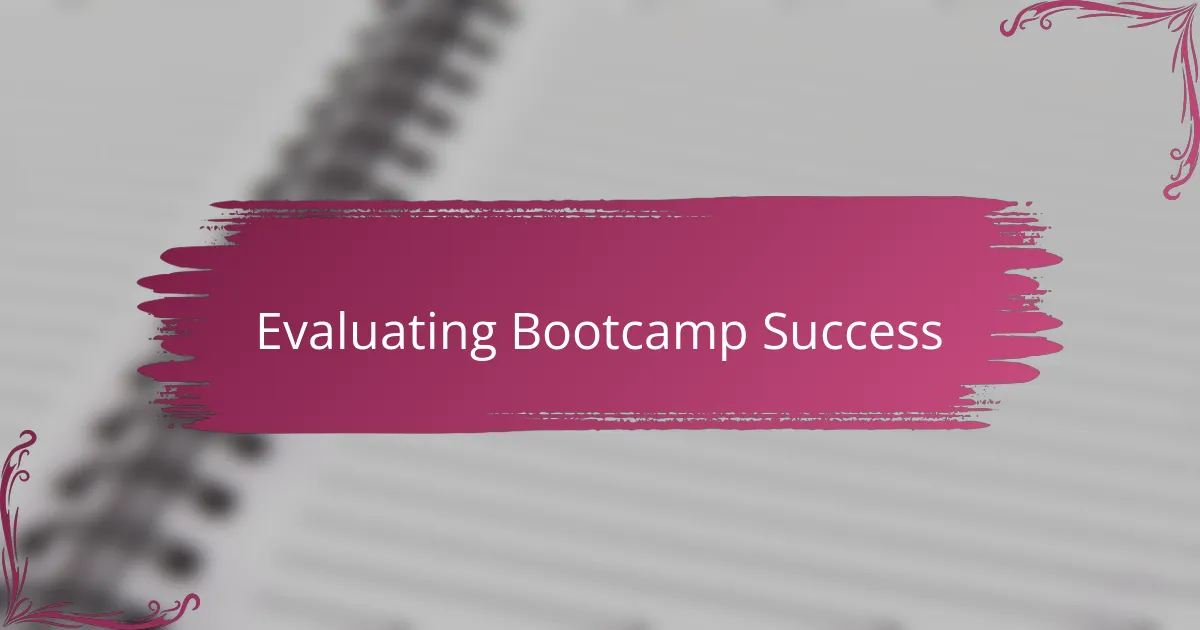
Evaluating Bootcamp Success
Measuring the success of the bootcamp wasn’t as straightforward as just checking if students completed the course. I found myself asking, “Did they really grasp the concepts? Could they apply what they learned to solve new problems?” Watching participants build their own projects and troubleshoot on the fly gave me the clearest answer.
I also paid close attention to feedback—both formal surveys and casual chats. One moment that stuck with me was when a student shared how confident they felt debugging code alone for the first time. That feeling of independence, to me, was the biggest marker of success.
But did success mean everyone landed a job immediately after? Not necessarily. For me, it was about planting seeds—giving learners the skills and mindset to keep growing. Evaluating bootcamp impact is ongoing, and sometimes the real victories show up weeks or months later in unexpected ways.
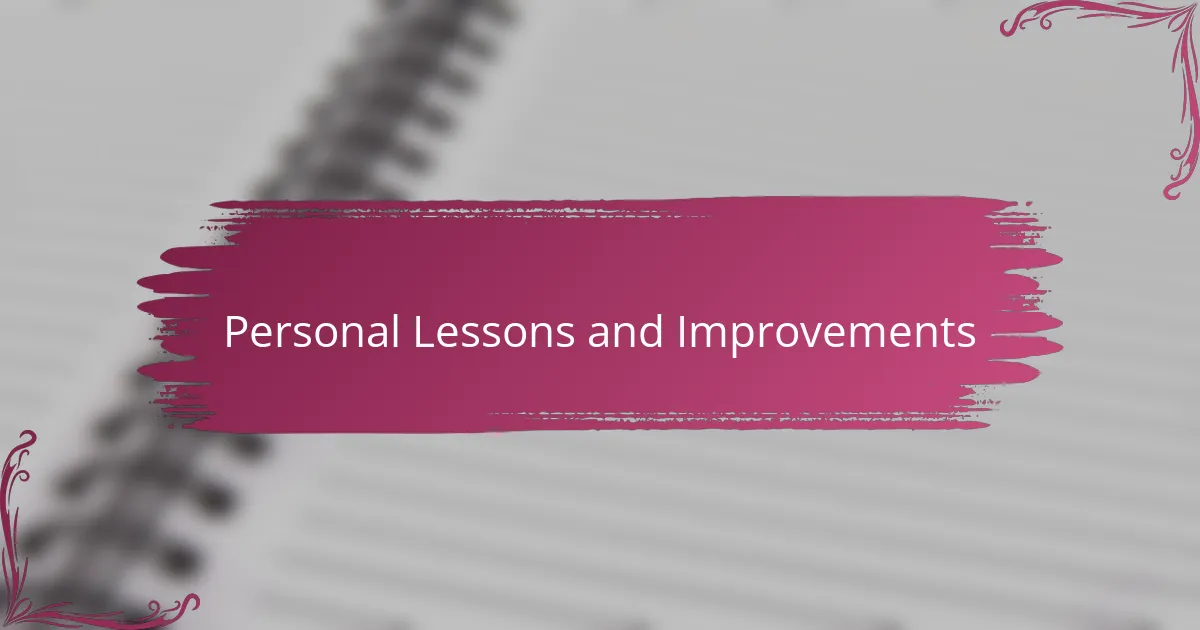
Personal Lessons and Improvements
Looking back, one lesson that really hit home was the importance of flexibility. I initially stuck rigidly to the schedule, but quickly realized that adapting on the fly—whether it meant spending more time on debugging or shifting topics based on student questions—made the experience richer for everyone. Have you ever been in a situation where loosening the reins improved the outcome? That’s exactly what happened here.
Another thing I improved on was communication. Early on, I assumed instructions were clear, but subtle misunderstandings popped up more than I expected. By encouraging open dialogue and checking in frequently, I noticed confusion melt away and engagement rise. It reminded me how powerful honest, ongoing conversations are in any learning environment.
Finally, I learned to embrace feedback without defensiveness. Receiving critiques about my teaching style or curriculum was tough at times, but stepping back and really listening helped me grow as an organizer. I now see feedback as a gift that sharpens the experience—not just for students, but for me personally. Have you ever found that the toughest feedback leads to the biggest breakthroughs? That’s where the real improvements lie.